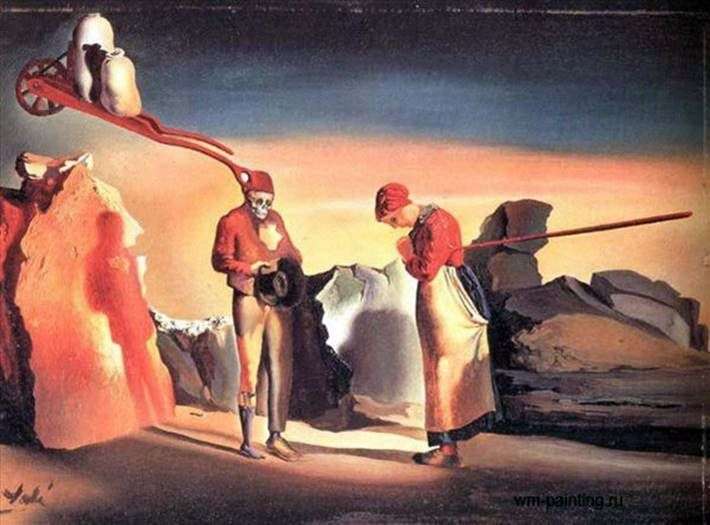
“Atavism of twilight” is the work of Salvador Dali. To confuse this picture with the submission of another artist is difficult. The Dalian handwriting is discernible in the characteristic delirium, understood only by him, and by the skill of painting of the high class. Atavism of El Salvador, as an individual of the “third” sex, splashed out in the twilight atavism on this canvas. Each, the picture makes you think over the meaning not only of the plot itself, but also of being and self. The picture presented is “an unimaginable” masterpiece of Dali’s creative impulse.
For the twilight subtext, the author portrayed carts with sacks, pitchforks stuck in a peasant woman, supposedly this evening of a day’s work, the end of field work and peasants, collecting scraps, twine around in the twilight. As is customary, Salvador Dali did not bother himself with a complex landscape, lush vegetation and grain ears. Its space is boundless, but it is edged by a dense wall of hills and stones. In order to color the sky in the colors of sunset, the author used bright colors – a strip of a mixture of lemon yellow and fiery red and a strip of already dark sky of plum color.
With juicy spots of the sun he wrote a crooked stone and a circle on the ground in which a man stands like a clown on an arena. In “Atavism Twilight” a lot of contrasting transitions from light to shadow were used, which gave the plot a sharp tone of the approaching twilight. A separate chapter wants to highlight the mood of the work. It is too complicated and causes confusion of the mind. Already dead heroes and a dying day are killed by all the joyful impulses of the contemplator.
Dali’s ill imagination had the same unhealthy imprint on canvas. The hardened spectator, and even more so the old man with the stick, who has passed both fire and water, will condemn both the skull of the peasant with the cart growing from him, and the death of the unfortunate woman from his own forks. He will not understand El Salvador, but he will say that everything is beautiful and colorful, like plasticine in the hands of a sick child. And we, those who know the painting and the fate of the author, share the longing and irresistible craving for Dali to God, his talent, directed in the opposite direction to the beautiful in something like dusk…
 Giraffe in the fire by Salvador Dali
Giraffe in the fire by Salvador Dali Transitional moment by Salvador Dali
Transitional moment by Salvador Dali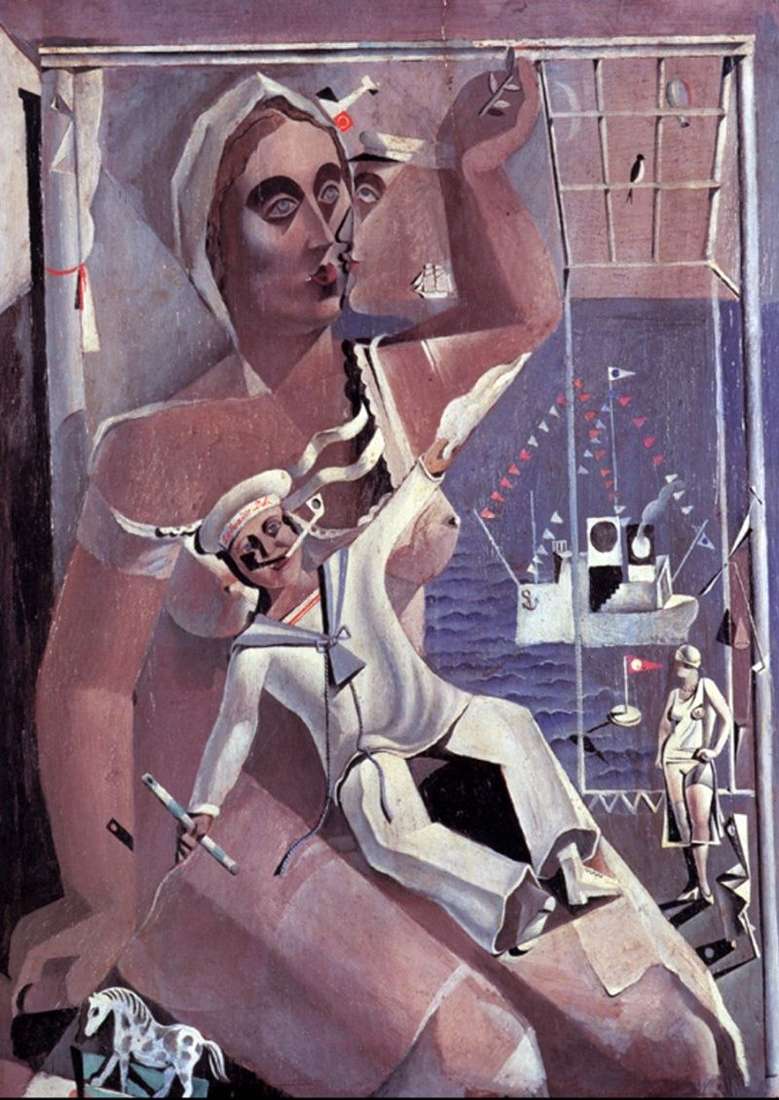 Venus and the Sailor by Salvador Dali
Venus and the Sailor by Salvador Dali Disappearing images by Salvador Dali
Disappearing images by Salvador Dali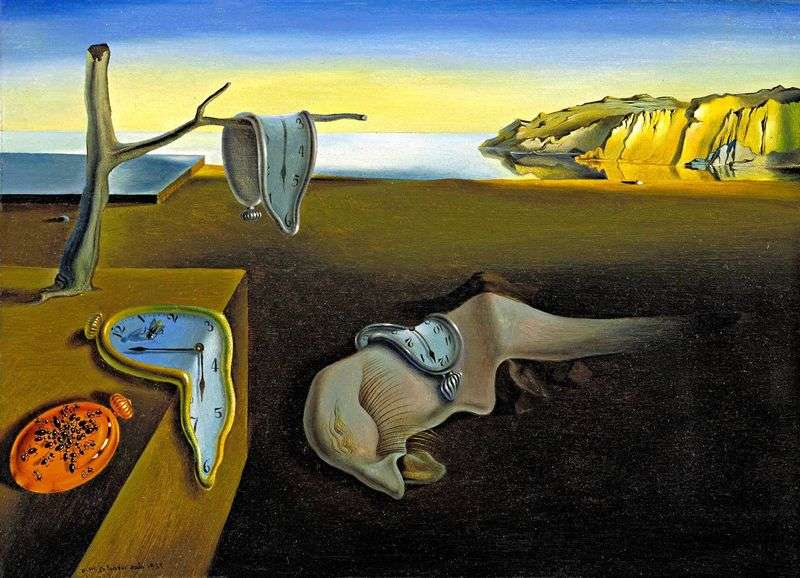 Consistency of memory by Salvador Dali
Consistency of memory by Salvador Dali Pieta (Pieta) by Salvador Dali
Pieta (Pieta) by Salvador Dali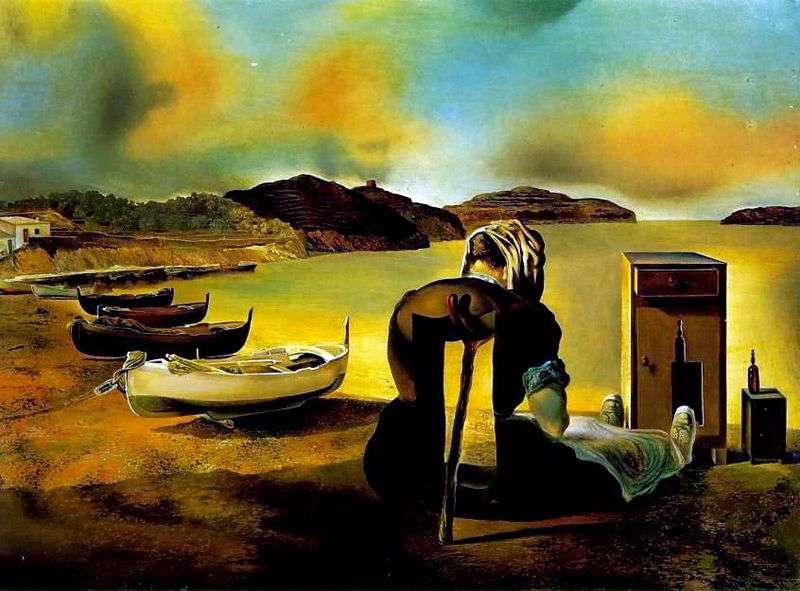 Weaning from the breast, feeding the furniture-fodder by Salvador Dali
Weaning from the breast, feeding the furniture-fodder by Salvador Dali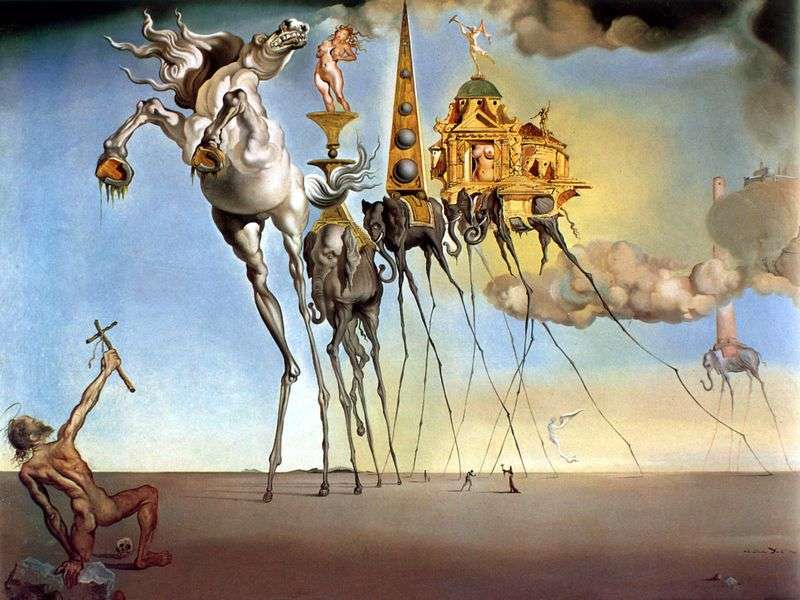 The Temptation of Saint Anthony by Salvador Dali
The Temptation of Saint Anthony by Salvador Dali